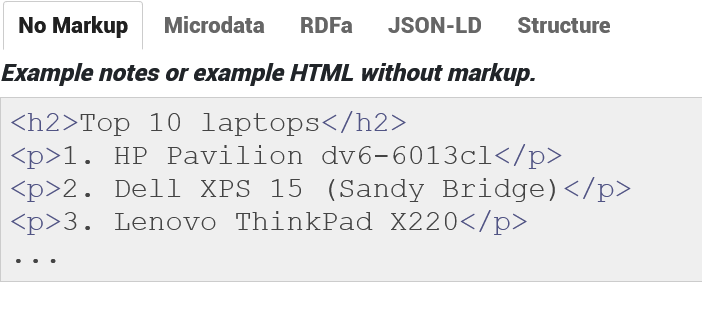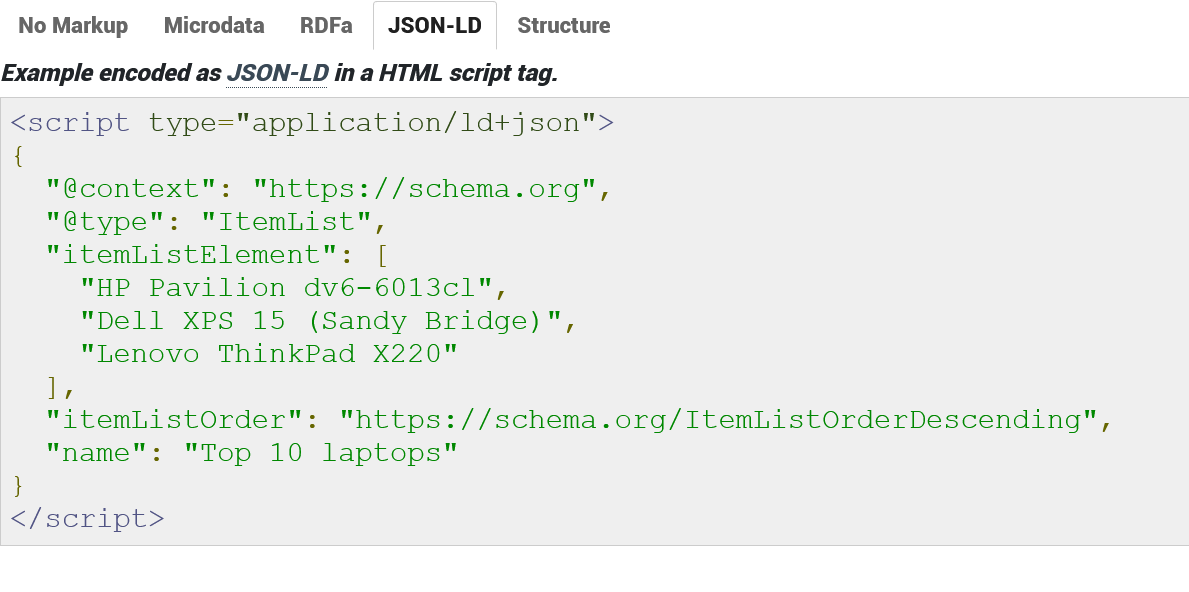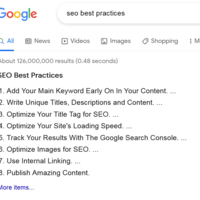How to Use Structured Data to Boost Your Google SEO (New)

More than ever, online businesses need to focus on SEO. For example, there were an estimated 12 to 24 million e-commerce sites in 2021. Even at the low end and often regardless of niche, there’s intense competition.
While there are many SEO best practices, the range and benefits of structured data are often overlooked. In fact, less than two years ago, Semrush stated that more than 50% of Fortune 500 companies still weren’t using structured data.
In the most simplistic of terms, structured data is made up of rich snippets that provide search engines with a better understanding of what the content of individual web pages is focused on.
If your company isn’t taking advantage of this very important aspect of search engine optimization, that needs to change. Now.
What is Structured Data?
Data influences your business. It provides you with the insights necessary to make decisions. But it also provides search engines with insights into what your website is about. In this case, we’re talking about structured data, and it’s a critical element of on-page SEO.
Before delving into how to use structured data and its best practices, let’s start with an explanation of what it is. And since some online definitions may be more confusing than helpful, this will be tailored to those of you who are not data engineers.
Structured data is in the language search engines use, making communication between them and your site better and faster. It conforms to specific, well-defined models and is stored within schemas such as databases. These schemas are easily accessed and used by humans and programs and their structure is typically tabular, with columns and rows that clearly define all attributes.
Essentially, structured data is data found in a fixed field within a database. When it comes to search engine optimization (SEO), structured data refers to the markup—or code—that Google, Bing, Yahoo, or any other search engine uses. They understand how to interpret and display your content and ultimately advance you in the search engine results pages (SERPs), and ideally be identified in the knowledge graph, knowledge panel, or carousel.
Let’s be clear here. The intent of structured data isn’t just to rank your site better. Structured data will help search engines identify what your website and individual pages—even content within your web pages—are about. And while many are familiar with the use of headings and meta tags to boost their PageRank, there’s a whole lot more data you can feed to Google’s algorithm.
Google’s prime objective is to provide a good user experience. In order to do that, understanding what a site and its content are about ultimately helps them guide users to what they’re looking for.
And most of this is going on behind the scenes. Structured data isn’t visible to your website visitors—unless you’re using structured data to generate rich or featured snippets.
Schema.org Structured Data Format

No Markup | Image Source
While there are a number of structured data formats, there are only a few that Google recognizes for SEO features. These are JSON-LD, which is used to organize and connect data, Microdata, which is used to nest metadata, and RDFa, which provides markup for things like recipes and reviews. Each of them communicates structured data in their own way, via a breadcrumb trail.
JSON-LD (JavaScript Object Notation for Linked Data)

JSON-LD Markup | Image Source
It’s worth noting that Google search recommends the use of JSON-LD when possible. However, it’s only within the last few years that Bing has begun to support it, and they state they have no preference.
JOSN-LD is easy to use and deploy since it can be used anywhere within the page’s code. When data is enclosed within <script type="application/ld+json"> ... </script> tags it can be used in the <head> or <body> of the page along with other metadata.
Microdata

Microdata Markup | Image Source
Microdata is a set of tags that were introduced along with HTML5. It’s also known as the WHATWG (Web Hypertext Application Technology Working Group) HTML standard. It’s used to add metadata within the HTML code. Microdata nests in with existing HTML, as seen in the example above.
RDFa (Resource Description Framework in Attributes)

RFDa Markup | Image Source
Another extension of HTLM5, RFDa is a flexible format that allows for combining vocabularies, which is especially helpful if you’re currently using a vocabulary that doesn’t meet your needs.
Learn More About Our SEO Services
What Does Structured Data Produce?
When structured data snippets—like the examples above—are used, they produce rich snippets or rich results. For an example of what they look like, you can see them on the Google results pages.
Here are some examples.
Review Snippets
A search on WordPress, the world’s favorite CMS, returns this review snippet.

Recipe Snippets
Recipes are another popular use of snippets. Here is an example of a recipe snippet.

Featured Snippets
Featured snippets are short blocks of text—about 300 characters long—that appear at the top of the Google search results. They provide a specific, succinct answer to a searcher’s query. It can be a paragraph or a list.
A Google search on SEO best practices returns the following example of a featured snippet.

On top of the three listed above, http://schema.org provides several other types of rich snippets. A few are:
-
Article
-
Event
-
Job Posting
-
Movie
-
Music
-
Organization
-
Person
-
Product
-
Recipe
-
Review
-
Top Stories
-
TV Episode
-
TV Series
-
TV Season
Using this type of markup has two benefits. Not only can it move you to the first page of the SERPs and into the knowledge graph and knowledge panel—assuming you’ve implemented a well-rounded SEO strategy instead of following bad SEO practices—it helps you to stand out more and should lead to higher click-through rates (CTRs).
Obviously, if your page doesn’t include any of the above-listed information, you wouldn’t add the structured data markup. And some data only needs to be on your home page, not every page. For example, the Organization markup. And if you’re trying to rank your local business, you’d want to include your address info.
Here are some examples of best practices when using some of the structured data markups listed above.
Article
If your site has news, blog, or article pages, then adding the Article markup will enhance their appearance in the search results. You’ll need to use the following properties:
-
Headline, which has a limit of 110 characters
-
Image
-
Date published
-
Author
-
Publisher
Product
Using Product markup will aid in attracting searchers to your product pages since they’ll be displayed in both regular search and image search gallery results pages. A badge is included on the image results pages to encourage users to click through to the content and hopefully increase conversions.
Product markup requires a name and one of the following:
-
Pricing
-
Rating
-
Review
Why is Structured Data Important?
Structured data is more than just a method that may help you with your Google ranking factors.
The benefits of utilizing structured data include better organic search visibility, higher click-through rates, and faster indexing.
It also plays an important role in voice search. For an idea of why that’s important, consider these stats.
-
Statista reports that for the 1st quarter of 2022, 58.99% of worldwide website traffic came from mobile devices.
-
According to statistics from Oberlo, voice search traffic in the U.S. alone equates to half of all American internet users. And it’s becoming more popular.
If the future of the search query is voice, it’s more important than ever to incorporate structured data schema markup into your search engine optimization practices.
But we’re still here today and plenty of searchers are still typing their queries into a Google search box, so it only makes sense to address the impact of structured data as part of current SEO best practices.
You need to utilize all possible SEO strategies when statistics show that 75% of searchers never scroll beyond the first page of search engine results. When webmasters give Google clear guidance about the content and layout of their webpage—in a language and syntax it can understand—they can push a site to the first page of the index and increase their organic traffic.
Structured vs Unstructured Data
Now that you have a clear picture of structured data, what is unstructured data?
Simply, it’s data that has no set format. And most of the data flowing today is unstructured—it’s known as big data. According to Oracle, there are three Vs to big data. Variety, volume, and velocity. It’s diverse—unstructured—there’s lots of it, and it’s streaming very quickly.
So what’s the problem with unstructured data, at least through the lens of a search engine? At this point, it’s still difficult for Google, Bing, Yahoo, et al., to understand unstructured data. For SEO purposes, structure is important, even if it’s just the basics of a semi-structured web page.
Structured vs Unstructured Data Examples
Since structured data is quantitative data, it matches a set value. A good example would be an Excel spreadsheet or database that has rows and columns of structured data that has been formatted into defined fields. It may contain addresses, dates, names, and other specific types of data.
Unstructured data would include anything where data isn’t stored in precisely defined fields. Examples would include:
-
Images, video, and audio content
-
Communications such as chat and messaging
-
Webpages
-
Social media (LinkedIn, or whatever is appropriate to your website content)
-
Documents, including plain text, emails(the content only), presentations, reports, and so on
-
Scientific data
-
Sensor data
Grow Smarter with 24/7 Website Monitoring
Unlock continuous performance insights and improvement suggestions that drive real growth.
What is Semi-Structured Data?
Somewhere in between structured data and unstructured data, we have semi-structured data.
As the name suggested, it has some structure, but it doesn’t conform to a rigid schema markup or strict framework. However, it is organized by subject or topic, and it does fit into a hierarchical programming language.
Semi-structured data examples would include emails, although, as noted above, they are partially unstructured as well. Since they do contain some internal structure within their metadata, such as Sender, Recipient, Subject, Date, and more, they are considered semi-structured.
Google’s Testing & Validation Tools
Feeling a bit intimidated? Google provides a selection of tools the provide a rich results test.
Google Structured Data Markup Helper
Google structured data doesn’t have to be difficult, thanks to the Structured Data Markup Helper tool. It allows users to add markup to a sample page. You can check the functionality of your markup and make any necessary changes or enhancements.
Schema Markup Testing Tool
This structured data testing tool is Google’s official tool for testing to see which rich results can be generated on your webpage.
You also have the option of using WordPress plugins instead of writing your own markup.
Finally, you can monitor your structured data via the Google Search Console.
Beyond Structured Data
It’s important to note that using schema markup alone isn’t enough to land you on the first page of the Google index. Here’s a quick run-through of what crawlers, bots, and search algorithms are looking for when building search engine rankings.
Web Core Vitals
Back in the spring of 2020, Google announced a set of user-focused metrics—Web Core Vitals—that were designed to measure how well a page did in providing a good user experience. The metrics pertain to:
-
Page Speed - Largest Contentful Paint (LCP)
-
Responsiveness - First Input Delay (FID)
-
Visual Stability - Cumulative Layout Shift (CLS)
The better your site scores in these metrics, the better website rank you’ll in the SERPs.
Off-Page SEO
Off page SEO refers to optimization that takes place somewhere other than your website but gives search engines additional information about what your site does, what kind of social proof you have, and even better insight into your products and services. These include, but aren’t limited to:
-
Backlinks
-
Brand mentions
-
Commenting on blogs
-
Forum discussions
-
Social signals
On-Page SEO
On-page SEO is what happens on your website—your page content. Along with structured data and semantic markup, there are several measures webmasters and administrators can take as part of their SEO strategy. They include:
-
Original, high-quality content
-
A good keyword research strategy
-
Optimize your images by using an image name, alt text, and captions
-
Use an SEO-optimized permalink structure
-
Internal link building
-
Outbound links
More Than You Can Handle?
Partner with O8. We can help you reach your digital marketing goals with our On-Demand Digital Marketing Solutions.








